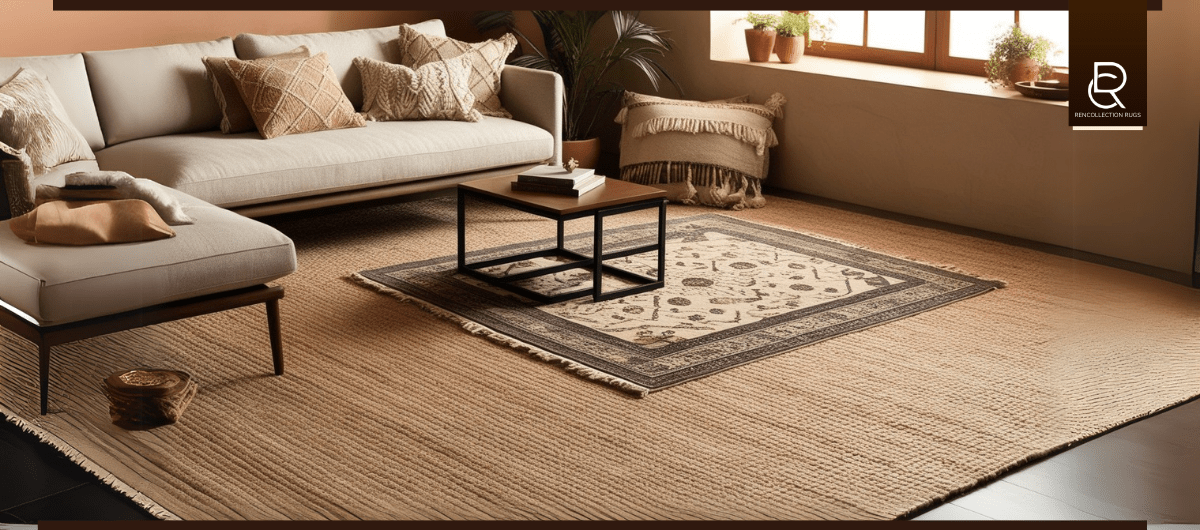Offer
Provide additional details about the offer you're running.

Rug layering is not just a trend, but a practical and stylish way to elevate your home decor. Layering rugs adds warmth, natural charm, and attractive design elements to your living space. This technique also offers a flexible way to define areas, create softness, and experiment with different patterns. Read on to discover the professional steps for successful rug layering.
The key to successful rug layering lies in the selection of the base rug. Opt for a large, neutral-tone rug made from jute, sisal, or low-pile wool. These materials serve as a versatile backdrop for various interior design styles and help define the space while exposing the floor at the sides.
A smaller rug should be used as the top accent piece, contrasting with the base rug through its textural and color or pattern elements. Such popular rug options for flooring areas include Persian rugs together with vintage rugs and faux hides and shag rugs. This intent seeks to add visual appeal while avoiding excessive area dominance. A patterned top rug is an excellent selection to add depth to a solid base rug.
Including multiple patterns and various textures in a space builds a welcoming character. You can achieve a quiet appearance by using a textured solid base rug and a top rug with soft patterns. To achieve a strong effect, geometric forms with conventional motifs should be chosen. A unified group of colors within your design will provide justice to the harmony of your decorating scheme.
Both size and placement matter to achieve an equilibrium between different floor layers. Here are a few strategies:
Furniture arrangement benefits from the use of layered rugs, providing both comfort and personalization. Cafe tables or bed legs can be accentuated on small rugs positioned directly underneath them. A living room seating arrangement gains personality and comfort by putting a patterned rug over neutral base flooring, making your home feel more inviting and uniquely yours.
Mixing different rug shapes should not make you fear. A distinctive visual is formed when round-based rugs stand opposite rectangular flooring while off-center placements develop artistic elements. Your home decor will gain an organic visual effect by strategically placing an irregularly shaped cowhide rug or an unpredictably shaped rug.
Functionality needs to be considered when using layered rugs. An added rug pad should hold the layers and offer extra padding beneath them. Flatweave and low-pile rugs make practical layering additions because they minimize risk areas for accidental falls, although they need less maintenance.
Homeowners can change their room decor by swapping rugs between different layers. Adding a plush or faux fur floor covering during winter months will warm the space. The warm season calls for exchanging heavy rugs with cotton or woven materials to preserve a modern appearance. Your ability to change rugs will maintain decor excellence and seasonal transformation throughout the year.
Verify that your rugs in different layers agree with the current decor style. Join your homeroom elements by using matching tones from your furniture pieces or curtains with accents. When choosing neutral rug layering, you need minimalist decor, but bold patterns work for traditional bohemian spaces.
Explore premium layering pieces at RenCollection Rugs and transform your space—shop now!

Enjoy an exclusive 5% discount on your first order as a warm welcome from us. Add beauty and comfort to your home—shop now and save!